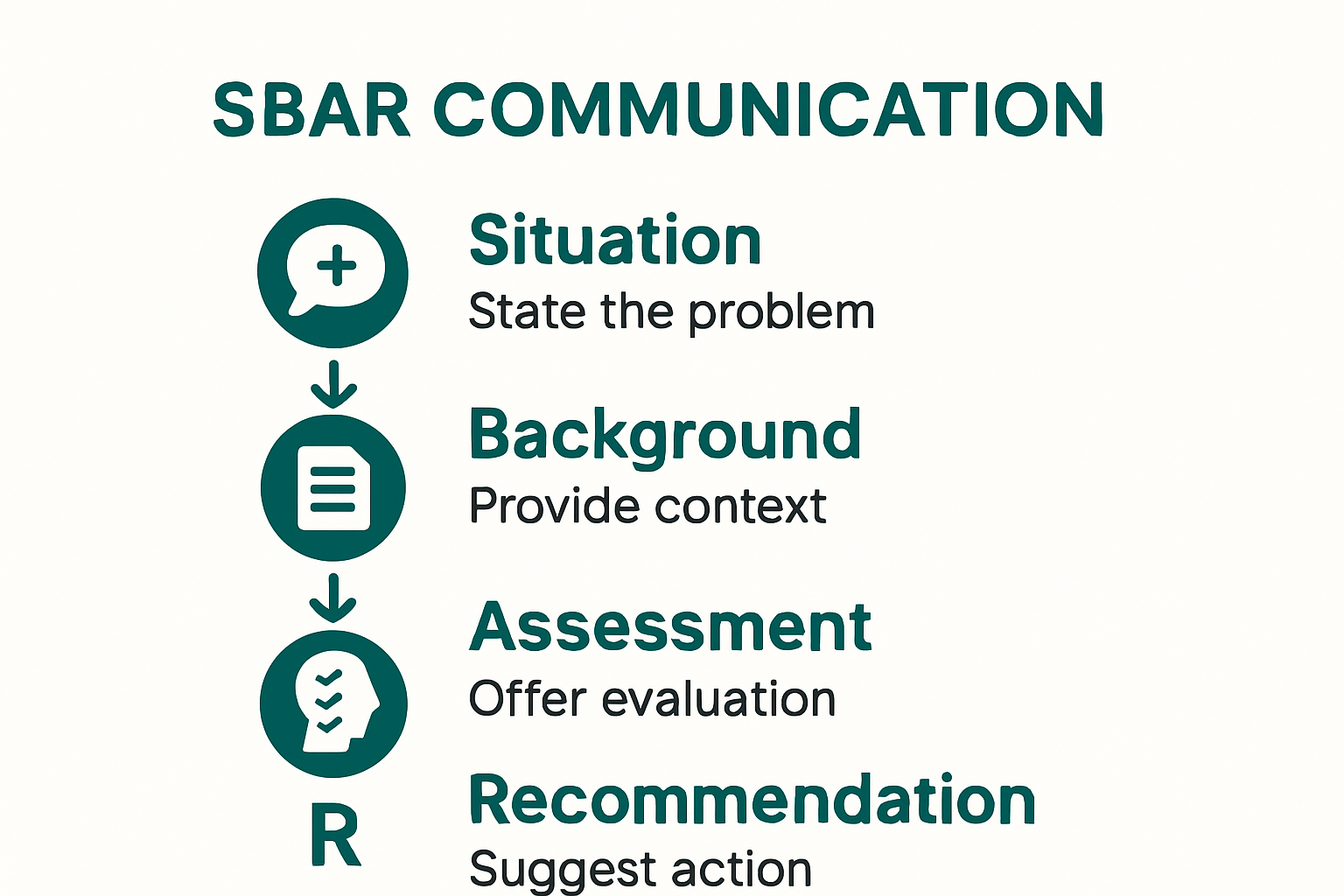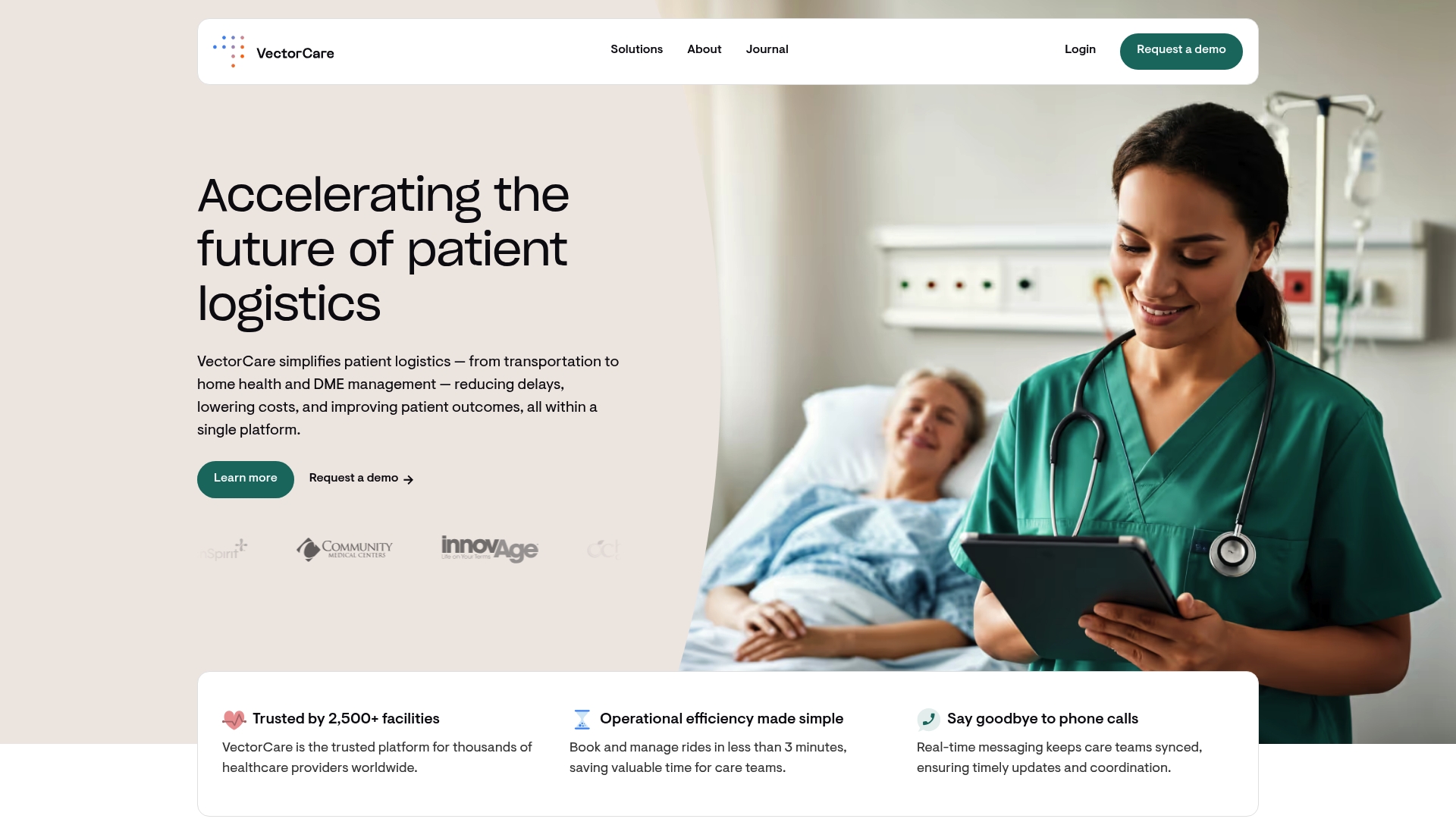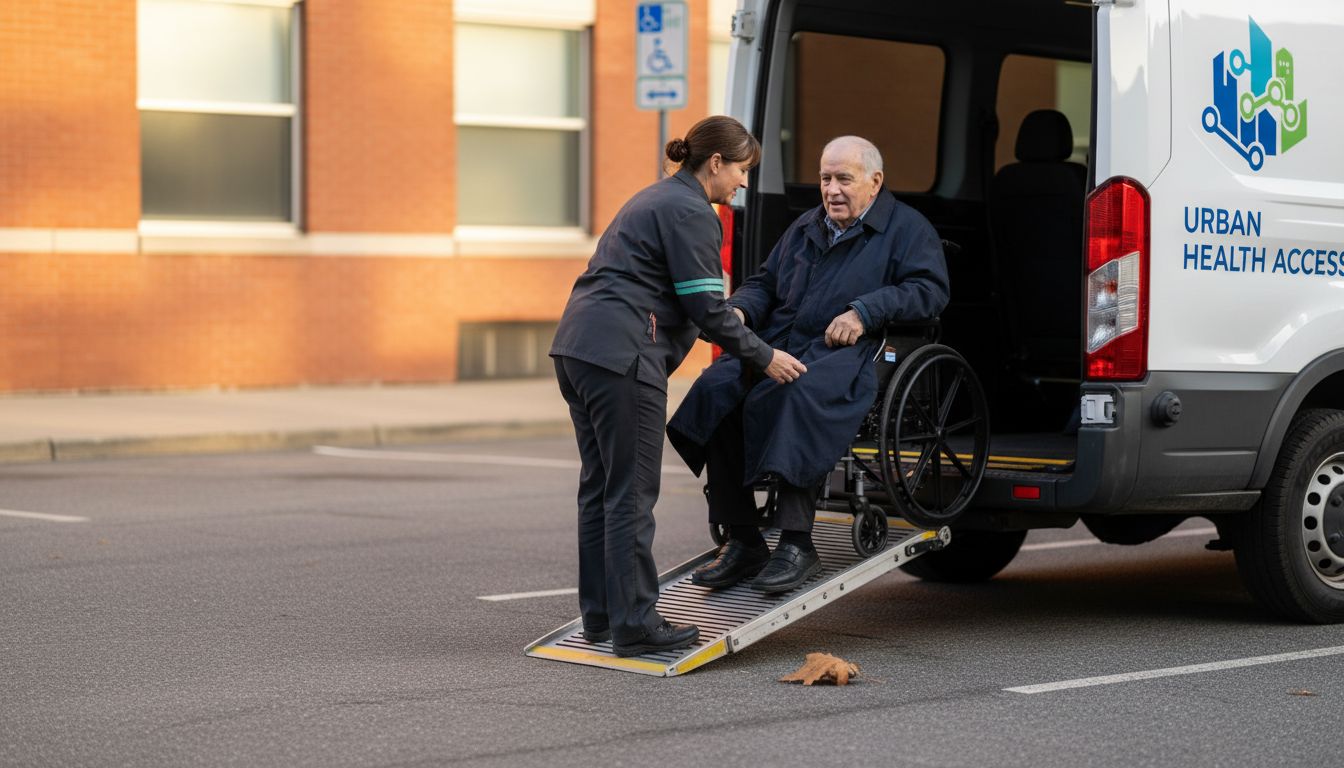How to Improve Team Collaboration in Healthcare Settings

Healthcare teams face huge pressure to work together, yet breakdowns in communication and rigid silos can still derail even the most skilled professionals. Studies show that structured communication tools like SBAR can significantly reduce medical errors. Most people assume that the right technology or protocols are enough to fix these issues. Surprising to many, the real breakthrough comes when organizations transform their culture to value psychological safety, trust, and continuous learning—unlocking a powerful new level of collaboration that saves lives.
Table of Contents
- Understanding The Barriers To Team Collaboration
- Proven Strategies For Better Communication
- Leveraging Technology For Real-Time Coordination
- Fostering A Collaborative Culture Across Healthcare Teams
Quick Summary
| Takeaway | Explanation |
|---|---|
| Identify and Address Communication Barriers | Communication breakdowns and professional silos hinder collaboration; recognizing these is essential for improvement. |
| Implement Standardized Communication Frameworks | Using structured tools like SBAR reduces errors and enhances clarity in information exchange among healthcare teams. |
| Foster a Collaborative Culture | Psychological safety and trust are vital for team dynamics, enabling open dialogue and mutual support among professionals. |
| Leverage Technology for Coordination | Advanced communication technologies streamline care processes and enhance real-time information sharing among team members. |
| Invest in Continuous Learning | Ongoing training and evaluation of team collaboration improve interprofessional understanding and enhance patient care. |
Understanding the Barriers to Team Collaboration
The following table summarizes the major barriers to effective team collaboration in healthcare settings, as discussed in the article. It highlights their core descriptions and potential impact on teamwork.
| Barrier | Description | Impact on Teamwork |
|---|---|---|
| Communication Breakdowns | Ineffective information sharing; use of jargon; hierarchical issues | Leads to errors and hinders patient safety |
| Professional Silos | Limited interaction across disciplines | Prevents coordinated care |
| Structural Impediments | Unclear roles; lack of trust; resistance to change | Creates friction and delays decision-making |
| Cultural Differences | Varied backgrounds and communication styles | May cause misunderstandings |
| Systemic/Workflow Challenges | Leadership gaps, administrative issues, tech barriers | Fragments care delivery |
| Workload Pressure & Time Constraints | High-stress and limited time for discussion | Leads to fragmented communication |
Healthcare team collaboration is complex and fraught with significant challenges that can dramatically impact patient care and organizational effectiveness. Identifying and addressing these barriers is crucial for creating high-performing, integrated healthcare teams that can deliver optimal patient outcomes.
Communication Breakdowns and Professional Silos
Communication represents the primary obstacle to effective team collaboration in healthcare settings. Research from the National Institutes of Health reveals that ineffective communication patterns can lead to increased error rates and compromised patient safety. Professional silos create significant walls between different healthcare disciplines, preventing seamless information exchange and coordinated care.
These communication barriers manifest in multiple ways. Physicians might use technical language incomprehensible to nurses, while administrative staff struggle to translate complex medical terminology. Hierarchical structures further complicate interactions, with junior staff feeling intimidated about sharing critical observations with senior professionals. Such dynamics create information bottlenecks that can have serious consequences for patient treatment.
Structural and Cultural Impediments
The Agency for Healthcare Research and Quality highlights several structural impediments that undermine team collaboration. Unclear team roles, lack of mutual trust, and resistance to change create substantial friction within healthcare teams. These challenges are particularly pronounced in high-stress environments like emergency departments, intensive care units, and surgical settings where rapid, coordinated decision-making is essential.
Cultural differences among team members further complicate collaborative efforts. Healthcare professionals from diverse backgrounds bring unique perspectives, communication styles, and professional norms. While diversity can be a strength, it can also create misunderstandings and friction if not managed proactively. Organizations must develop strategies that promote cross-disciplinary understanding and respect.
Systemic Challenges and Workflow Disruptions
The Institute of Medicine’s research underscores how systemic challenges impede effective team collaboration. Inadequate leadership support, complex administrative processes, and technological barriers can fragment care delivery. Electronic health record systems, while designed to improve communication, sometimes create additional complexity if not implemented thoughtfully.
Workload pressures and time constraints further exacerbate collaboration challenges. Healthcare professionals often operate in high-stress environments with limited time for comprehensive team discussions. This constant pressure can lead to fragmented communication, reduced empathy, and decreased willingness to engage in collaborative problem-solving.
Addressing these barriers requires a multifaceted approach. Healthcare organizations must invest in communication training, develop clear team protocols, create psychological safety for open dialogue, and implement technologies that facilitate seamless information sharing. By recognizing and systematically addressing these challenges, healthcare teams can transform potential obstacles into opportunities for improved patient care and organizational effectiveness.
Proven Strategies for Better Communication
Below is a table summarizing the main standardized and technology-enabled strategies for improving communication in healthcare teams, along with their key features and benefits.
| Strategy | Key Features | Main Benefits |
|---|---|---|
| SBAR Communication Framework | Structured info sharing: Situation, Background, Assessment, Recommendation | Reduces errors, ensures clarity |
| TeamSTEPPS & Simulation Training | Leadership, mutual support, scenario-based learning | Enhances skills, breaks down silos |
| Secure Messaging & EHR Tools | Real-time updates, role-based access, privacy | Streamlines info exchange, protects data |
| Mobile Communication Apps | Task lists, messaging, patient updates | Centralizes team communication |
| Feedback & Communication Audits | Regular reviews and open discussions | Drives continuous improvement |
Effective communication is the cornerstone of successful healthcare team collaboration. By implementing targeted strategies, healthcare organizations can transform communication from a potential weakness into a powerful tool for improving patient care and team performance.
Standardized Communication Frameworks
Research from the National Institutes of Health reveals that structured communication tools can significantly reduce medical errors and improve team coordination. One of the most powerful approaches is the SBAR (Situation-Background-Assessment-Recommendation) technique, which provides a consistent framework for sharing critical patient information across different healthcare disciplines.
The SBAR method ensures that communication is concise, clear, and comprehensive. When a nurse needs to report a patient’s condition to a physician, they follow a structured protocol: describing the current situation, providing relevant background information, offering a professional assessment, and making specific recommendations. This approach minimizes misunderstandings and ensures that crucial details are not overlooked during high-stress medical interactions.

Interdisciplinary Team Training and Simulation
The AHRQ Patient Safety Network highlights the importance of comprehensive teamwork training programs like TeamSTEPPS. These evidence-based approaches go beyond traditional communication techniques by integrating leadership development, mutual support practices, and scenario-based learning.
Simulation training provides a safe environment for healthcare professionals to practice communication skills under realistic conditions. By recreating complex medical scenarios, teams can identify communication breakdowns, practice effective information sharing, and develop strategies for managing high-pressure situations. These simulations often include team members from different disciplines, helping to break down professional silos and build mutual understanding.
Technology-Enabled Communication Solutions
Advanced communication technologies play a crucial role in modern healthcare collaboration. Secure messaging platforms, integrated electronic health record systems, and real-time communication tools enable instant information sharing across different departments and healthcare settings. These technologies support asynchronous communication, allowing team members to share updates, ask questions, and coordinate care more efficiently.
Implementing mobile communication apps with role-based access can streamline information exchange while maintaining patient privacy. These solutions can include features like secure messaging, shared task lists, and real-time patient status updates. By providing a centralized communication hub, these technologies reduce the risk of information fragmentation and support more coordinated patient care.
Successful communication strategy implementation requires ongoing commitment from leadership. Organizations must create a culture that values clear, respectful, and transparent communication. This involves regular training, establishing clear communication protocols, and creating psychological safety where team members feel comfortable sharing observations and concerns.
Continuous improvement is key. Regular feedback sessions, communication audits, and open discussions about communication challenges can help healthcare teams refine their approach. By treating communication as a dynamic skill that requires constant development, organizations can create more resilient, responsive, and patient-centered healthcare teams.
Leveraging Technology for Real-Time Coordination
Technology has emerged as a transformative force in healthcare team collaboration, offering unprecedented opportunities for real-time coordination, information sharing, and seamless communication across complex healthcare ecosystems.
Digital Care Coordination Platforms
Research on digital healthcare technologies demonstrates the critical role of technology in creating person-centered care models. Modern digital platforms enable healthcare teams to track patient journeys, share critical information instantaneously, and coordinate care across multiple disciplines and settings.
These platforms go beyond traditional communication tools by providing comprehensive dashboards that integrate patient records, real-time status updates, and collaborative workspaces. By centralizing information, these technologies reduce communication delays, minimize manual data entry, and create a more transparent care coordination environment. Teams can now access comprehensive patient information, track treatment progress, and make informed decisions quickly.
Integrated Communication Technologies
Organizational science research highlights how digital technologies can address long-standing challenges in healthcare communication. Advanced messaging systems, secure video conferencing, and integrated communication platforms break down traditional barriers between different healthcare professionals and departments.
These technologies support asynchronous and synchronous communication, allowing healthcare teams to collaborate effectively regardless of physical location. Mobile applications with role-based access enable secure, instant messaging, task assignment, and real-time patient status updates. Such tools are particularly valuable in complex care scenarios involving multiple specialists, emergency responses, and interdisciplinary treatment plans.
Data-Driven Coordination Strategies
A systematic review of care coordination technologies reveals the transformative potential of data-driven approaches. By leveraging artificial intelligence and machine learning, healthcare organizations can predict potential communication gaps, optimize resource allocation, and proactively address potential coordination challenges.
Advanced analytics can help identify patterns in team communication, highlight potential bottlenecks, and suggest improvements in coordination processes. Machine learning algorithms can analyze historical communication data to recommend more efficient collaboration strategies, helping teams continuously improve their coordination mechanisms.
Learn more about how coordinated platforms support community care, enabling more integrated and responsive healthcare ecosystems.
Successful technology integration requires more than just implementing tools. Healthcare organizations must develop comprehensive digital transformation strategies that include staff training, change management, and continuous technology evaluation. By creating a culture that embraces technological innovation and views digital tools as enablers of better patient care, teams can unlock the full potential of real-time coordination technologies.
Fostering a Collaborative Culture Across Healthcare Teams
Creating a truly collaborative healthcare environment requires more than implementing communication tools or establishing protocols. It demands a fundamental cultural transformation that prioritizes mutual respect, shared goals, and interprofessional understanding.
Building Trust and Psychological Safety
Research on multidisciplinary team development demonstrates that effective collaboration hinges on creating psychological safety where team members feel comfortable sharing insights, admitting mistakes, and offering constructive feedback. This approach transforms traditional hierarchical structures into dynamic, interactive environments where every team member’s perspective is valued.
Trust-building requires deliberate strategies. Leaders must model vulnerability, acknowledge their own limitations, and create spaces for open dialogue. Regular team-building activities, interdisciplinary workshops, and structured reflection sessions can help break down professional barriers. By encouraging informal interactions and creating opportunities for personal connections, healthcare organizations can develop more cohesive and supportive team dynamics.
Interprofessional Relationship Development
Collaborative healthcare research emphasizes the critical role of person-to-person communication in building effective teams. Beyond formal meetings, casual conversations, shared learning experiences, and collaborative problem-solving sessions help team members develop deeper mutual understanding and respect.
Interprofessional education programs play a crucial role in this cultural transformation. By exposing healthcare professionals to different disciplinary perspectives early in their training, organizations can cultivate a more integrated approach to patient care. Rotating interdisciplinary teams, joint training simulations, and collaborative research projects can help professionals develop empathy and appreciation for diverse professional roles.
Continuous Learning and Cultural Alignment
Quality improvement studies highlight that collaboration is not a static achievement but an ongoing process of cultural refinement. Healthcare organizations must invest in continuous learning mechanisms that promote interprofessional interactions and shared growth.
Performance evaluation systems should be redesigned to reward collaborative behaviors, not just individual achievements. This might include metrics that assess team communication effectiveness, cross-disciplinary problem-solving, and collective patient outcomes. Recognition programs that celebrate collaborative successes can further reinforce the cultural shift towards more integrated healthcare delivery.

Explore strategies for uniting diverse healthcare interests and creating more responsive care ecosystems.
Leadership commitment is paramount in driving this cultural transformation. Executives and department heads must consistently demonstrate and communicate the value of collaboration. This involves creating organizational structures that facilitate cross-disciplinary communication, investing in collaborative technologies, and developing leadership training programs that emphasize interprofessional understanding.
Ultimately, fostering a collaborative culture is about recognizing that exceptional patient care is a collective endeavor. By prioritizing mutual respect, continuous learning, and shared accountability, healthcare teams can create more innovative, efficient, and compassionate care environments.
Frequently Asked Questions
What are common barriers to team collaboration in healthcare?
Communication breakdowns, professional silos, structural impediments, cultural differences, systemic challenges, and workload pressures are common barriers that hinder collaboration in healthcare settings.
How can standardized communication frameworks improve teamwork in healthcare?
Standardized communication frameworks like SBAR (Situation-Background-Assessment-Recommendation) provide a structured approach for sharing critical patient information, ensuring clarity and reducing the risk of misunderstandings and errors among team members.
What role does technology play in enhancing healthcare team collaboration?
Technology facilitates real-time communication and coordination among healthcare teams by providing integrated communication platforms, secure messaging systems, and digital care coordination tools, which streamline information sharing and improve patient care.
Why is fostering a collaborative culture important in healthcare?
Fostering a collaborative culture enhances psychological safety and trust among team members, encouraging open dialogue and mutual support. This ultimately leads to more effective teamwork, improved patient outcomes, and a more innovative care environment.
Unlock Seamless Team Collaboration in Healthcare with VectorCare
You have read how communication breakdowns, professional silos, and outdated workflows can put patients at risk and slow down care. The article shows that real improvement happens when healthcare teams have the right tools for standardized communication, real-time coordination, and a collaborative culture. But building these systems alone can be overwhelming and costly.

Let VectorCare help your teams break free from the old barriers in healthcare collaboration. Our digital platform automates patient logistics, streamlines secure communication, and delivers powerful data insights for every stakeholder. With features like real-time updates, scheduling optimization, and compliance-ready workflows, VectorCare supports your goal of creating safe, efficient teams that communicate effortlessly. Discover how you can move from fragmented care to coordinated excellence today. Learn more and start transforming your team’s collaboration at VectorCare’s digital platform. For deeper details on uniting diverse care teams with technology, visit this resource on coordinated platforms in community care. Bring your team together now at https://www.vectorcare.com.
Recommended
- Becker’s Healthcare Report: How VectorCare Solves Communication Gaps in Patient Transfers – VectorCare
- How Coordinated Platforms Can Unite Private and Public Interests to Support Community Care – VectorCare
- How Technology Can Empower Healthcare Professionals – VectorCare
- Patient Flow Barriers: Impact to Hospital Efficiency and Patient Outcomes – VectorCare



